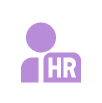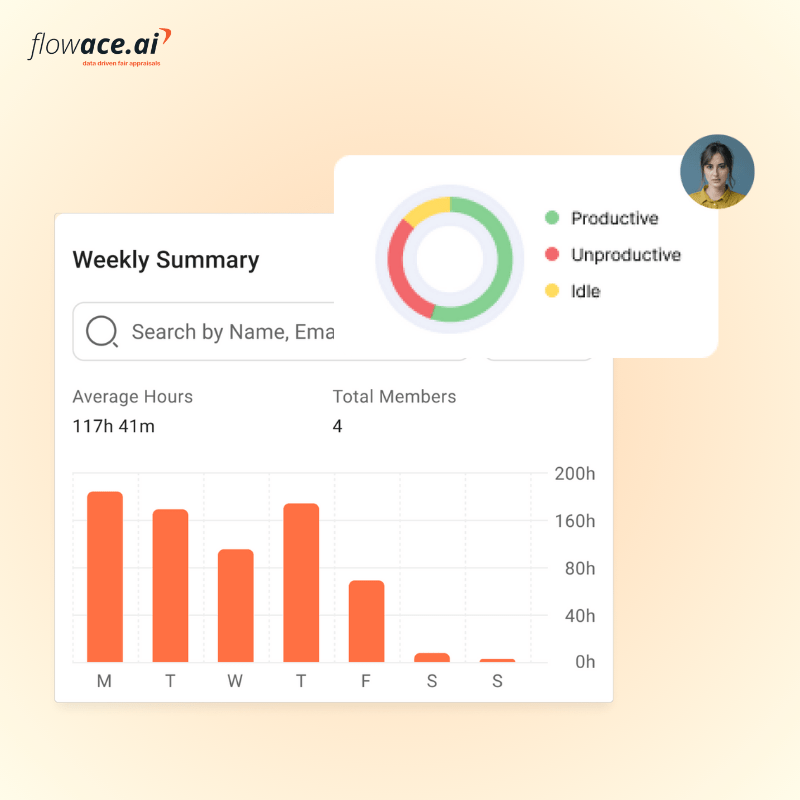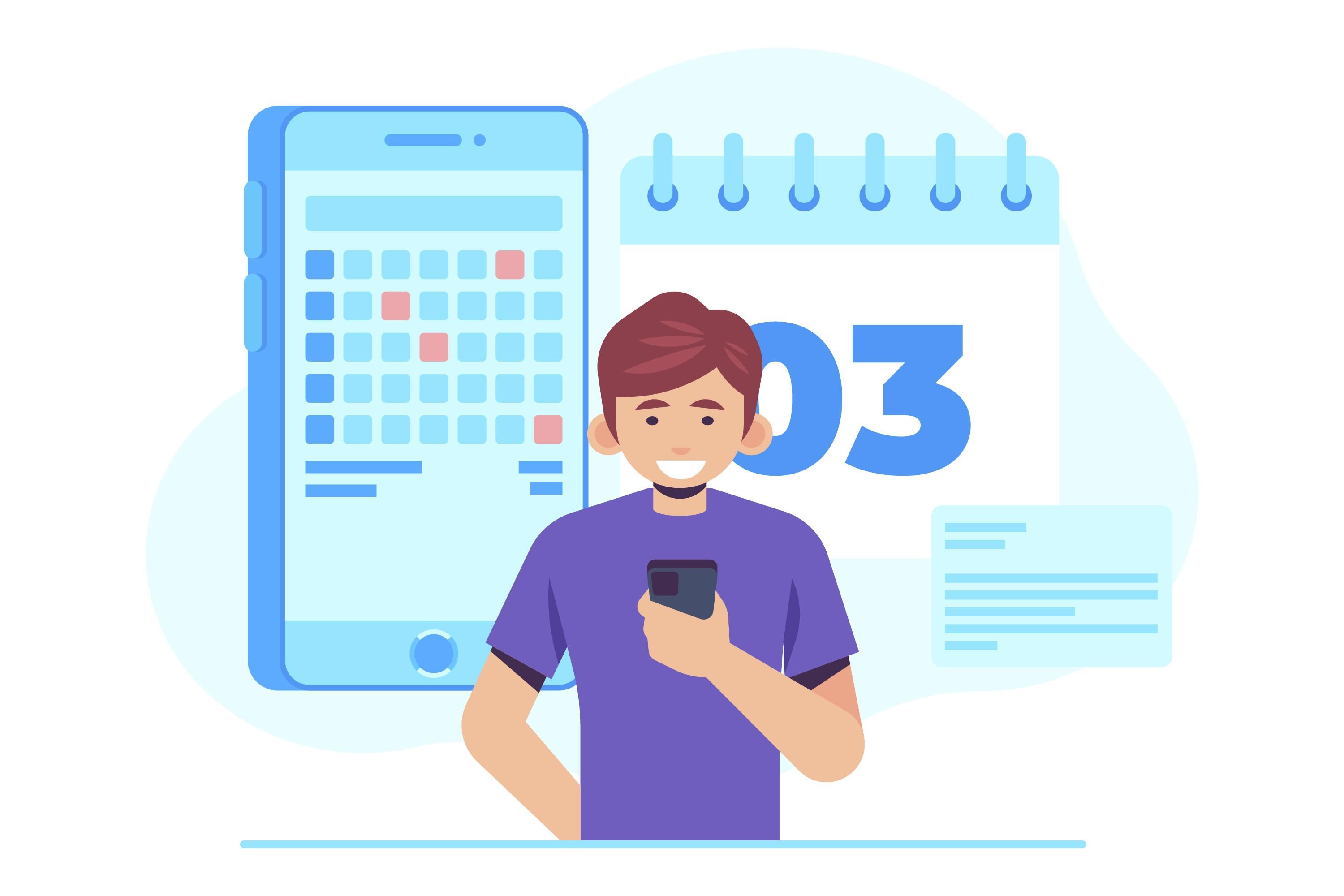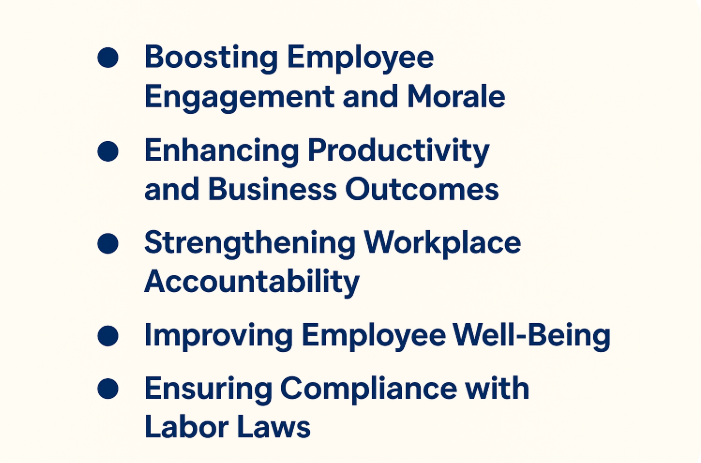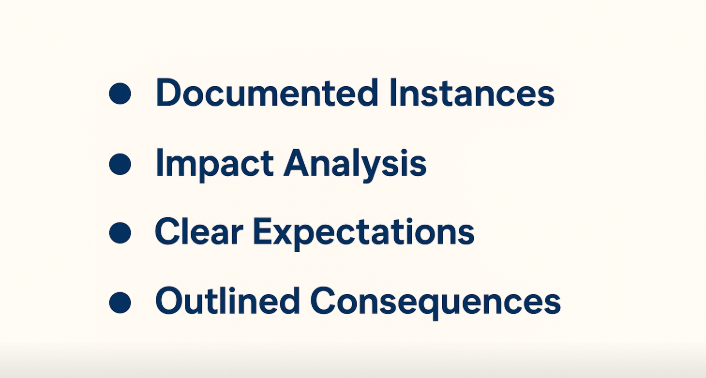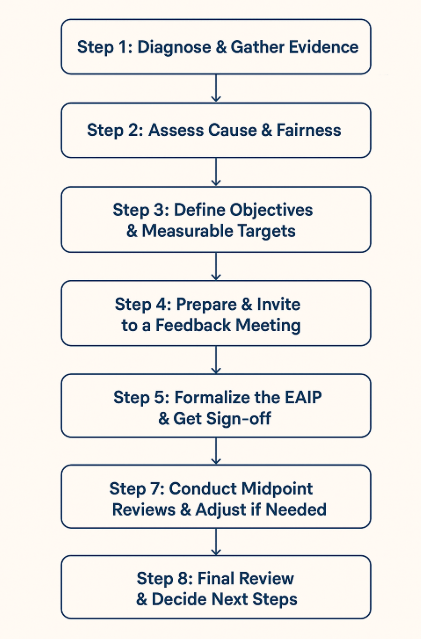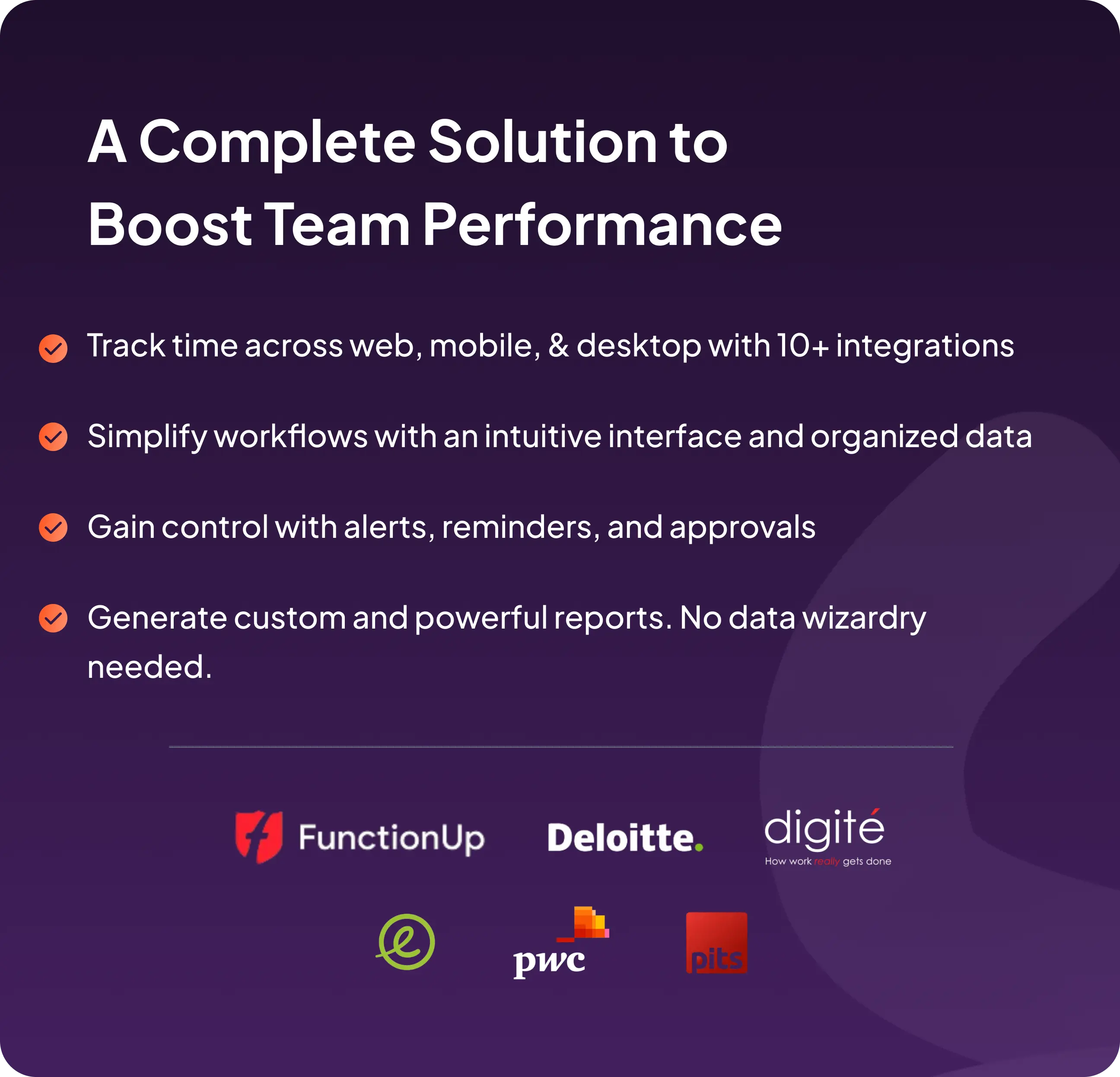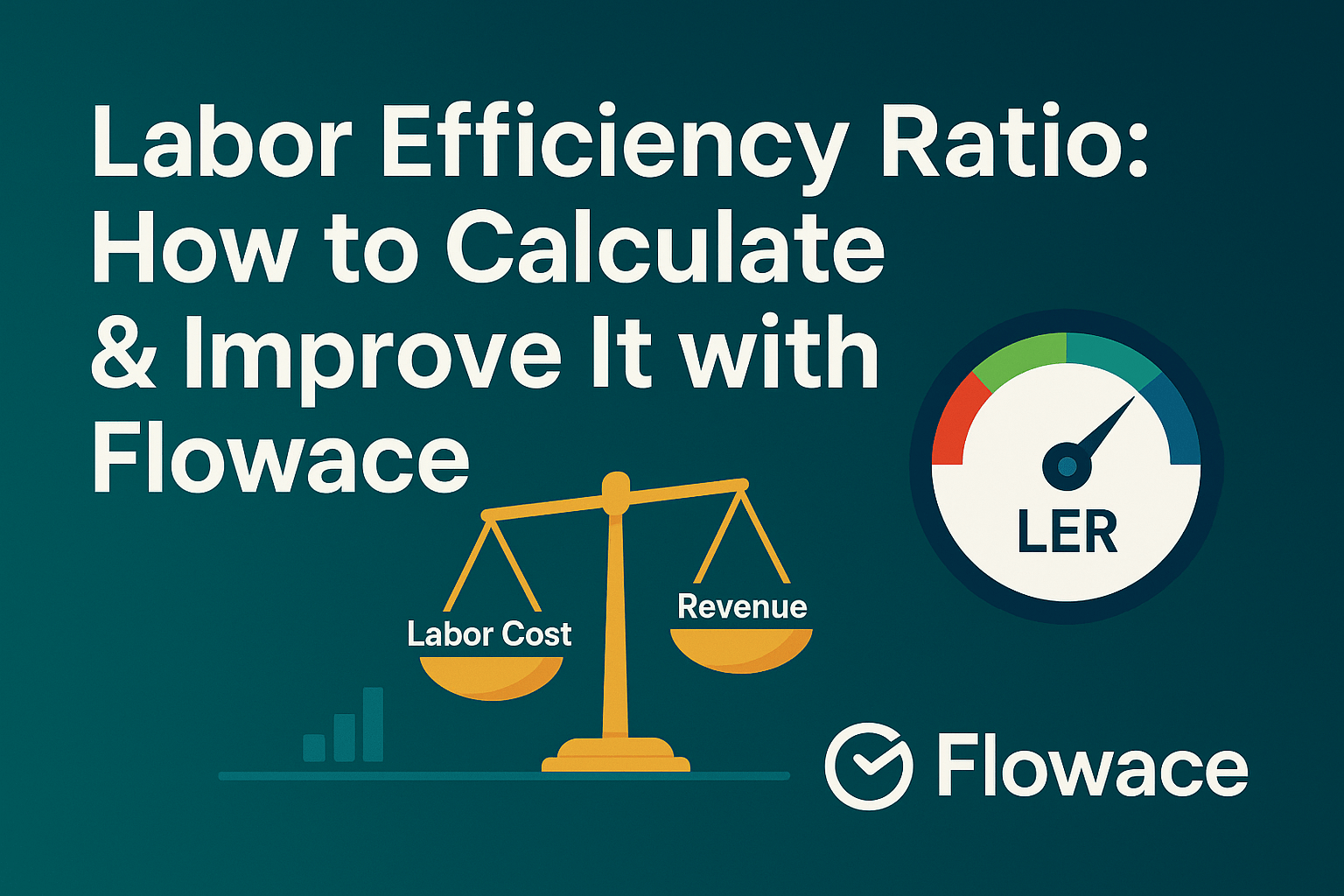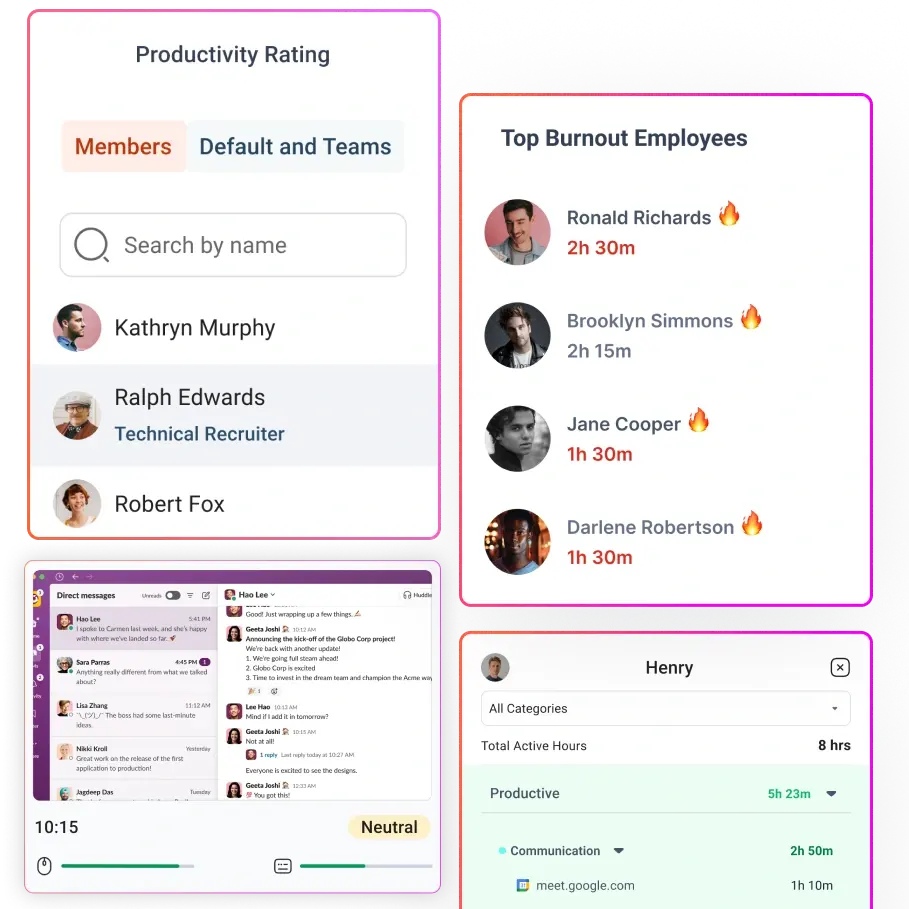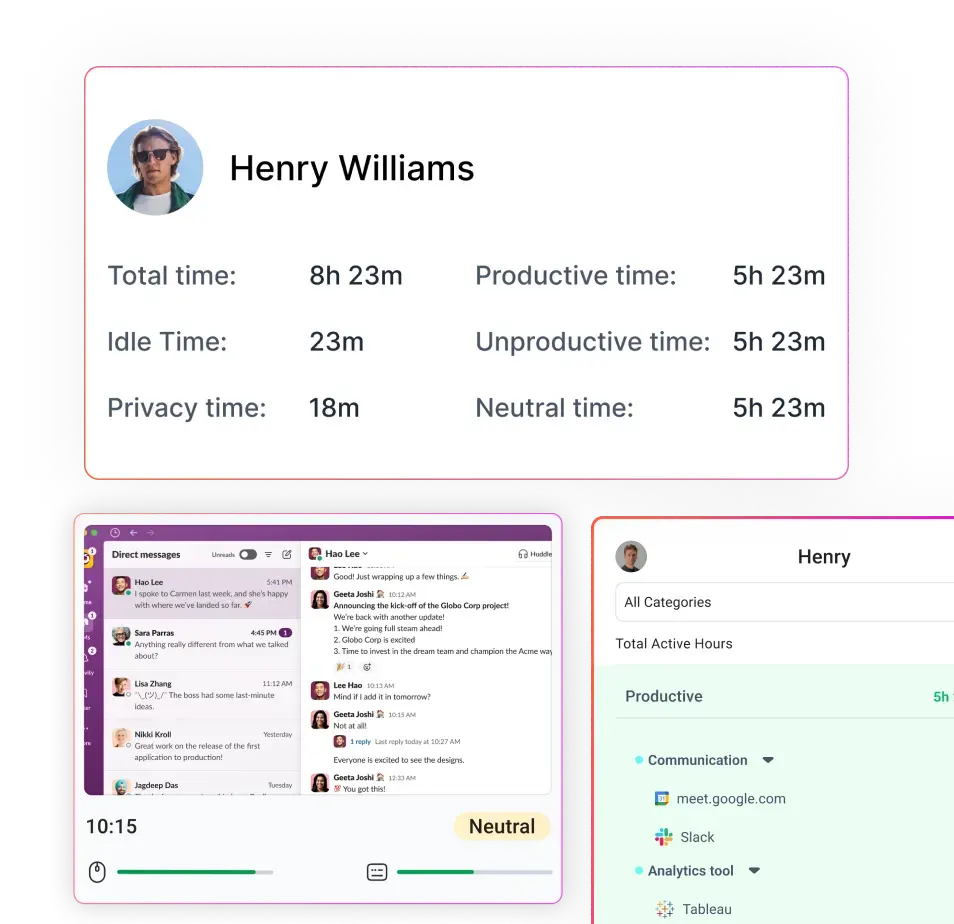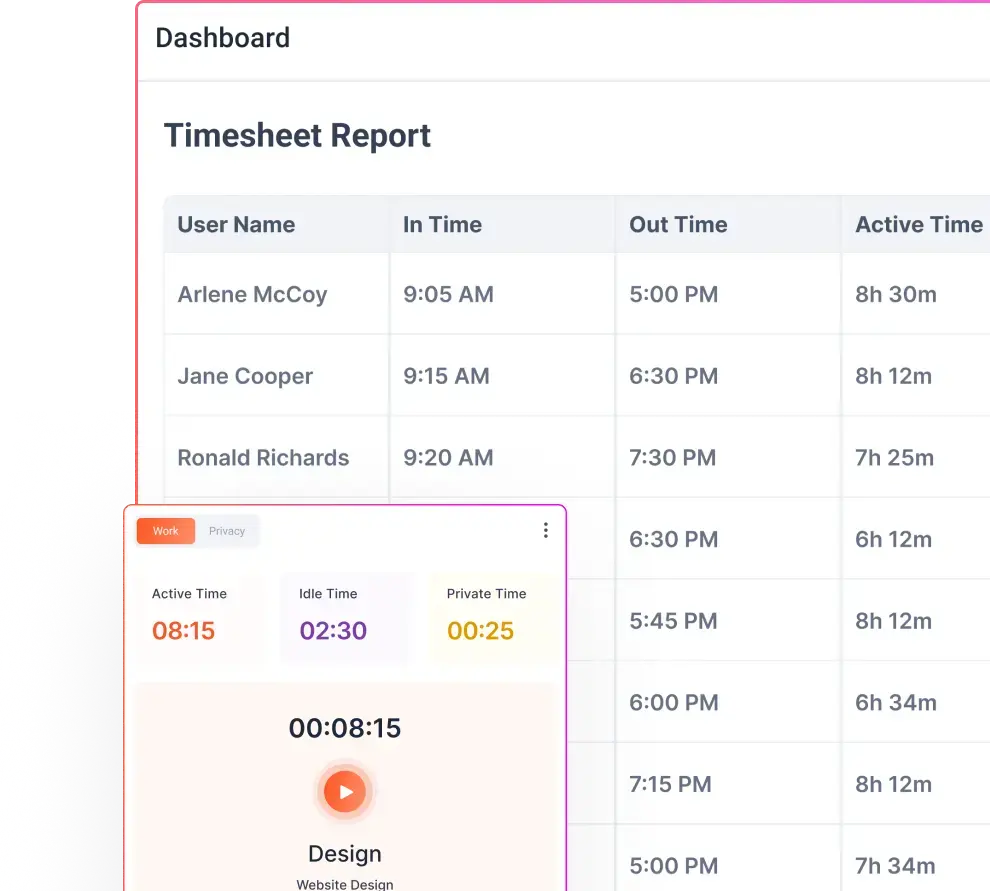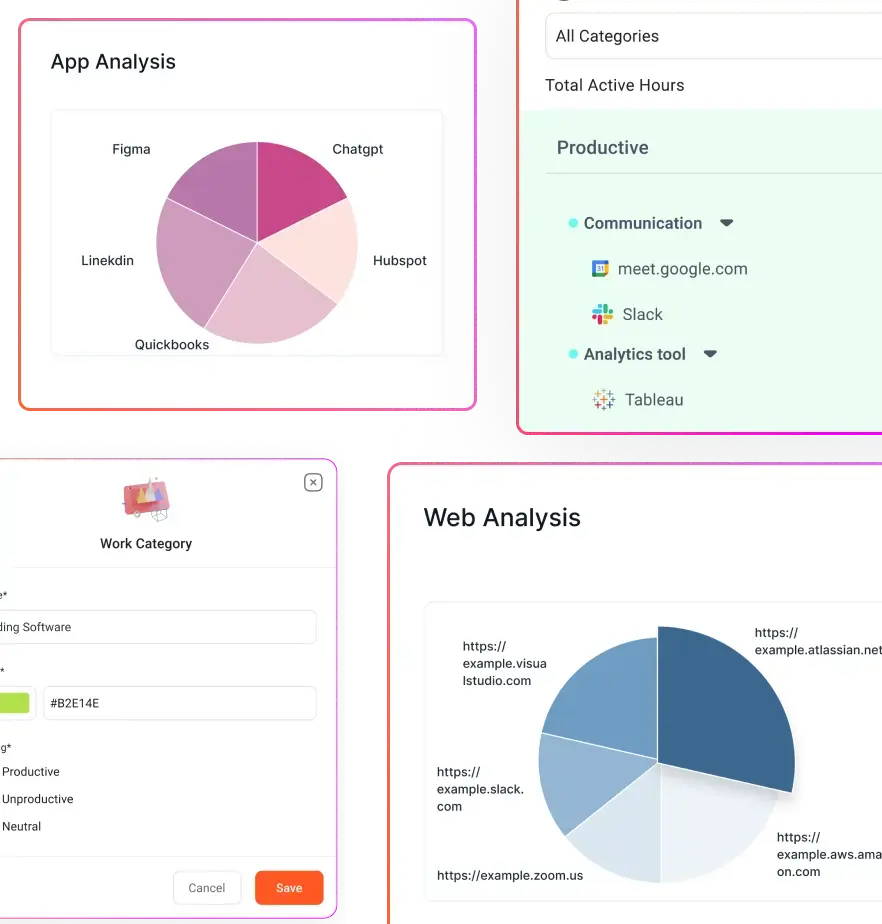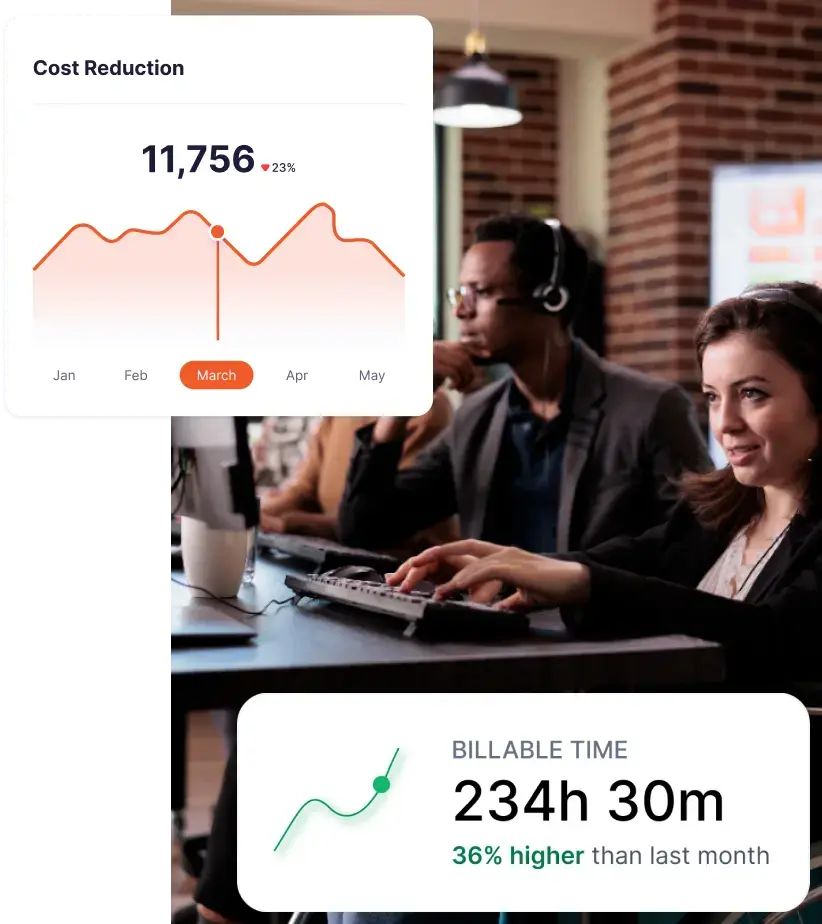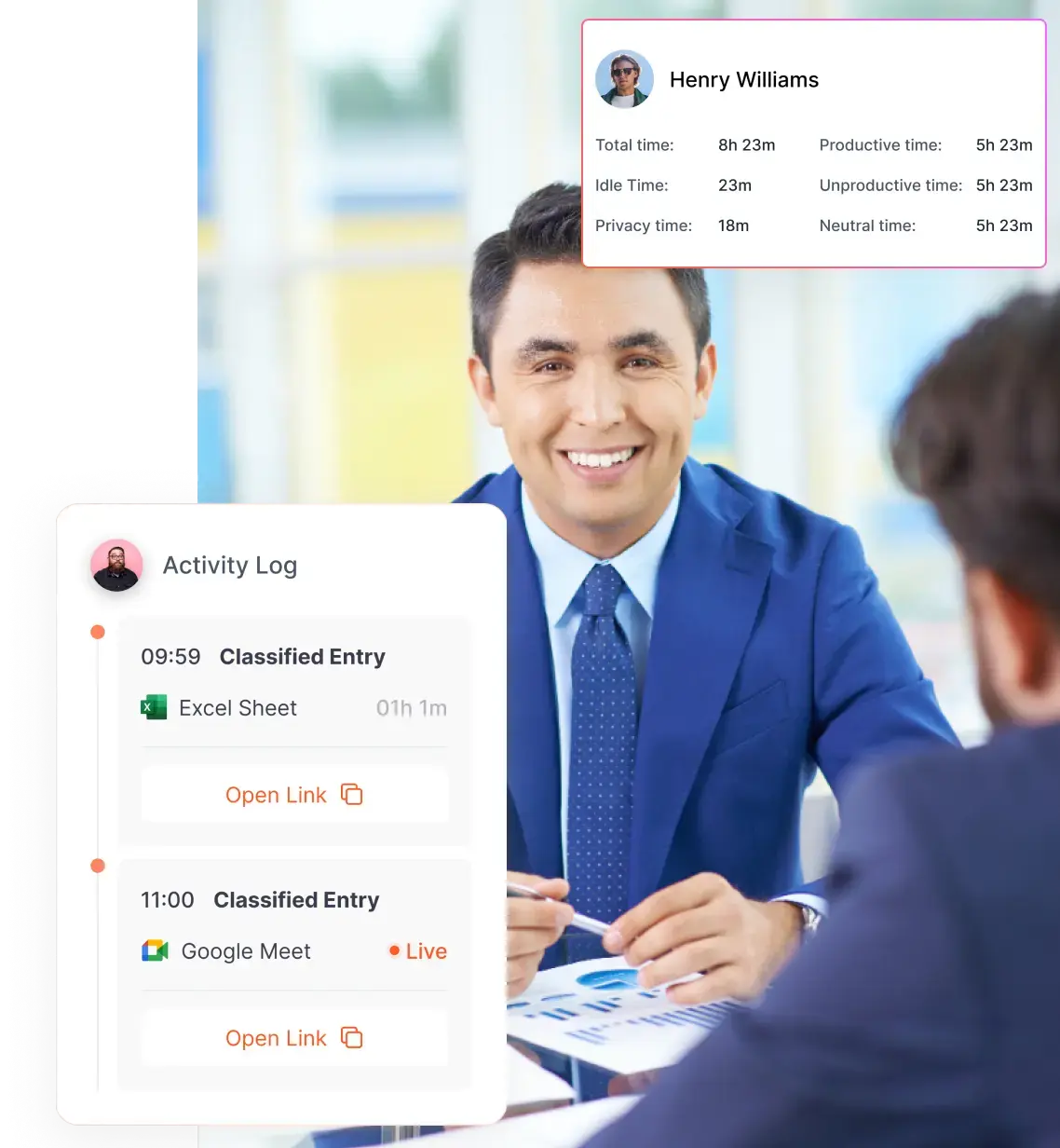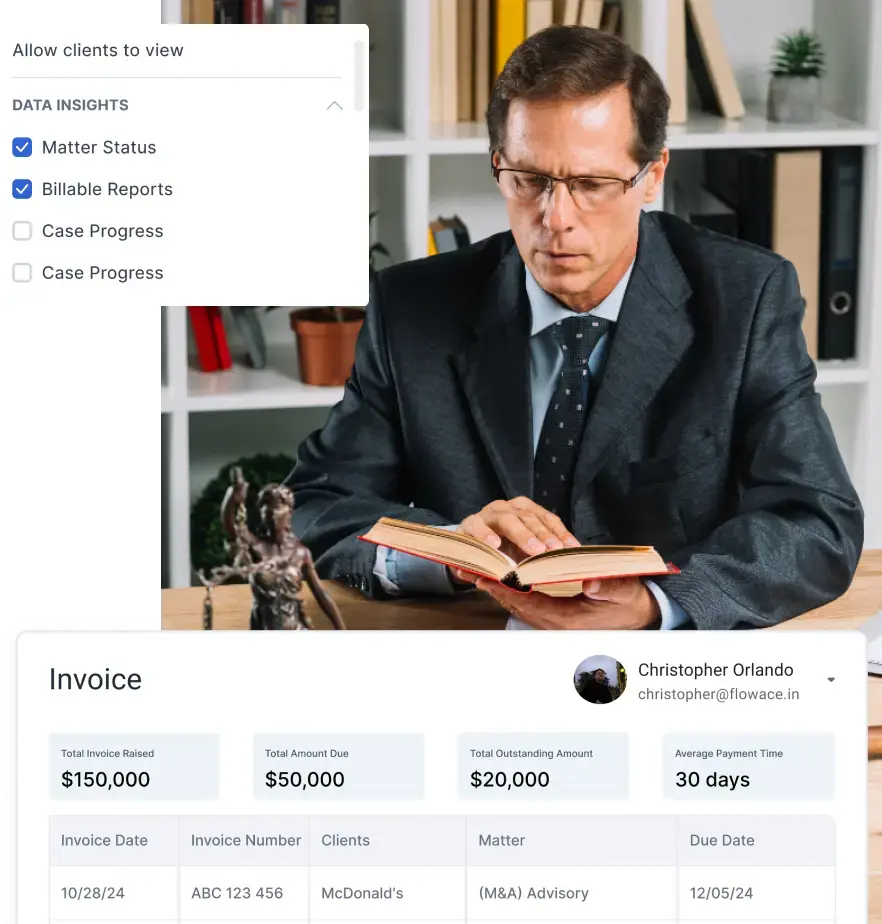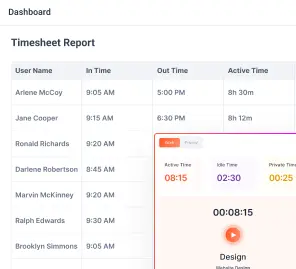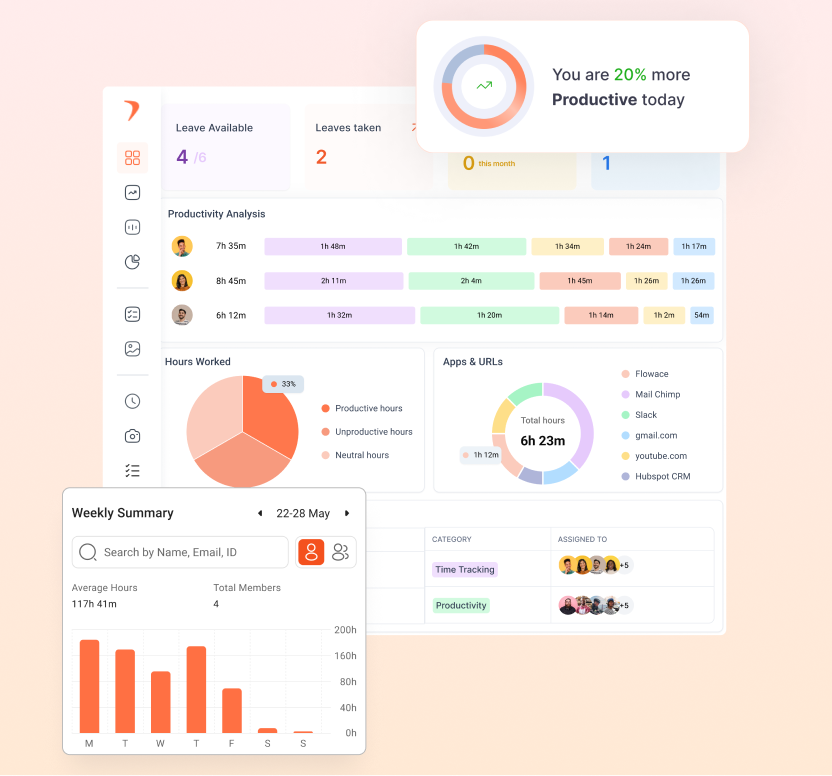Without a proper attendance tracking system, things can go south very fast. Unclear leave policies and unexpected absences are a sure recipe for disaster. AI-powered solutions like Flowace can solve this problem with their automated attendance tracking and smart scheduling features. But tools are just one part of the solution.
With a smart tool, you need a smart plan. An Employee Attendance Improvement Plan (EAIP) sets clear expectations for both managers and employees. It keeps everyone accountable and reduces absenteeism. A well-structured attendance action plan ensures that workplace attendance remains consistent and reliable.
Hence, instead of dealing with attendance issues after they hurt your business, you can prevent them before they start.
What is an Employee Attendance Improvement Plan?
A productive workforce starts with your employees showing up consistently. An Employee Attendance Improvement Plan (EAIP) is a structured approach to reducing absenteeism and improving attendance. It helps you set clear expectations, track attendance patterns, and identify causes of low employee productivity before they impact your business.
EAIP outlines the policies, consequences, and support systems to keep employees accountable and engaged. When done right, this employee management system creates a fair, transparent, and motivating work environment. Having a performance improvement plan for attendance also allows businesses to proactively address chronic absenteeism before it escalates.
Why do you need an Employee Attendance Improvement Plan?
Instead of asking why you need an Employee Attendance Improvement Plan (EAIP), let’s flip the perspective. What happens when you don’t have one? When your employee attendance management system is left unchecked, organizations face a cascade of problems that affect workplace morale.
Rather than reacting to attendance problems after they impact your business, an EAIP allows you to prevent them altogether. It is a structured, transparent HR attendance management solution where:
- Employees know what’s expected of them
- HR can track attendance in real time
- Managers can take proactive measures to reduce absenteeism through intervention strategies
- Businesses stay legally compliant and avoid unnecessary costs
The benefits go beyond just tracking attendance. A strong plan also plays a key role in:
Boosting Employee Engagement and Morale
A well-implemented attendance improvement plan develops a culture of accountability and improves employee productivity. When employees see that attendance policies are fair and backed by incentive-based attendance, they are more likely to stay engaged and motivated. Recognizing employees with stellar attendance records can further drive commitment and enthusiasm at work.
Enhancing Productivity and Business Outcomes
Organizations thrive when employees show up regularly and perform their best at work. Consistent attendance leads to seamless workflow, reduced disruptions, and strong team collaboration. Moreover, businesses that actively track and improve attendance tend to have higher customer satisfaction rates due to uninterrupted service delivery.
Strengthening Workplace Accountability
An effective attendance management plan creates a transparent system where employees understand their responsibilities. By setting clear guidelines and expectations, businesses can hold employees accountable while ensuring fairness.
Improving Employee Well-Being
Absenteeism is often linked to stress, burnout, or workplace dissatisfaction. A proactive attendance improvement strategy provides employees with necessary support systems, flexible work arrangements, and wellness programs to ensure a healthier work-life balance.
Ensuring Compliance with Labor Laws
Many industries have strict attendance-related labor regulations that companies must adhere to. A structured plan helps organizations avoid legal repercussions and maintain compliance with employment laws regarding work hours and leave policies.
Essential Components of a Successful Employee Attendance Improvement Plan
So, what makes an EAIP truly effective? It’s not just about enforcing rules. It’s about building a system that works for both you and your employees. Let’s break down the key elements that make it successful.
- Documented Instances: Data is the primary asset in any organization. Preparing an attendance action plan document that tracks absenteeism trends allows HR teams to identify patterns and address issues proactively.
- Impact Analysis: Companies should assess the impact of an employee’s absence. Analyze how frequent absences affect a project deadline or productivity metrics and find remediation measures.
- Clear Expectations: Define attendance policies with specific expectations. This ensures that employees know the standards they are expected to meet. Clarity in policies reduces confusion and improves compliance.
- Outlined Consequences: Employees need to know the consequences of poor attendance, but that’s only half the equation. Recognizing and rewarding consistency makes them more likely to follow attendance policies.
How to Develop an Effective Performance Improvement Plan For Attendance
An Attendance Improvement Plan (EAIP) only works if it’s clear, consistent, and structured. Below is a comprehensive 8-step framework that organizations can follow to address attendance challenges fairly while giving employees a genuine opportunity to improve.
Step 1: Diagnose & Gather Evidence
The first step is to get the facts straight. An effective attendance improvement plan should be grounded in data, not assumptions. Begin by pulling attendance records for the last 60 to 90 days and reviewing them for specific instances of absenteeism, lateness, or early departures. Look beyond just the numbers, identify patterns such as frequent absences on Mondays, recurring late arrivals after long weekends, or consistent early departures before closing shifts.
Supplement the data with notes from managers and any related documentation, like leave requests or clock-in system records. By building a clear, evidence-based picture of the attendance issue, you ensure the conversation that follows is objective and rooted in reality rather than perception.
Step 2: Assess Cause & Fairness
Once you’ve identified the attendance concerns, it’s essential to dig into the underlying causes. Not all absences signal misconduct; some may be legitimate or legally protected. Review the company’s attendance policy to confirm whether the employee has actually crossed defined thresholds.
Then, check whether absences were excused through doctor’s notes, pre-approved leave, or protected by legislation such as FMLA or ADA. Also consider external factors: is the employee struggling with childcare responsibilities, health conditions, or transportation barriers? If so, accommodations or support might be appropriate. Document your findings in a short memo, which will help demonstrate that the process is fair and non-discriminatory. This stage prevents unnecessary escalation and protects your organization from compliance risks.
Step 3: Define Objectives & Measurable Targets
With the facts in hand and fairness assessed, the next step is to set clear, realistic goals for improvement. A strong attendance improvement plan uses SMART goals: Specific, Measurable, Achievable, Relevant, and Time-bound. For example, instead of vaguely telling an employee to “improve attendance,” you might set an objective like, “No more than one unexcused absence within the next 60 days.”
Decide on the timeframe for monitoring, usually 30, 60, or 90 days, depending on the severity of the issue, and identify how progress will be tracked. Don’t forget to outline what support the company will provide, whether that’s flexible scheduling, access to wellness programs, or transportation assistance. By putting measurable targets on paper, both the employee and the manager know exactly what success looks like.
Step 4: Prepare & Invite to a Feedback Meeting
Before the plan is implemented, invite the employee to a dedicated meeting to discuss the issue. The goal here is not to intimidate but to collaborate. Send an invitation in advance, clearly stating the purpose of the meeting, to review attendance challenges and discuss a path forward.
Prepare an agenda that covers three areas: reviewing the evidence, exploring the reasons behind the attendance issues, and co-creating a plan for improvement. Bring a draft EAIP template with you to guide the discussion and ensure nothing is missed. Framing this meeting as an opportunity for dialogue, rather than a disciplinary session, helps the employee feel respected and engaged in their own success.
Step 5: Formalize the EAIP & Get Sign-off
After the meeting, finalize the plan together. Walk the employee through each section of the EAIP, making sure they understand the goals, the monitoring period, and the resources available to support them. Clarify the consequences if improvement does not occur, but also emphasize that the plan’s purpose is to help them succeed, not punish them.
Once both sides are aligned, the plan should be signed by the employee, the manager, and HR. Provide a copy to the employee and keep another in the HR file for compliance. This step ensures mutual accountability and removes ambiguity — everything is in writing, agreed upon, and transparent.
Step 6: Implement Monitoring & Support
Now it’s time to put the plan into action. Attendance should be monitored consistently during the improvement period, whether through weekly reports, daily logs, or automated systems. Equally important is offering ongoing support to the employee. If the root cause of absenteeism was personal or logistical, check whether accommodations are helping.
If additional resources are needed, consider adjustments to working hours, wellness support, or mentorship programs. Document every conversation and intervention so there’s a clear trail of evidence. This balance of monitoring and support reinforces that the organization is invested in the employee’s success, not just in discipline.
Step 7: Conduct Midpoint Reviews & Adjust if Needed
Don’t wait until the end of the improvement period to evaluate progress. A midpoint review, typically halfway through the plan, provides an opportunity to celebrate improvements, address ongoing challenges, and make necessary adjustments.
For instance, if the employee has made progress but continues to struggle with transportation, you might explore alternative start times or carpooling solutions. Document the discussion and any changes made to the plan. A supportive midpoint review demonstrates fairness and commitment, while also keeping the employee accountable to their goals.
Step 8: Final Review & Decide Next Steps
At the end of the monitoring period, conduct a final review. Compare the employee’s attendance data against the goals outlined in the EAIP. If they’ve met or exceeded expectations, close the plan on a positive note and formally recognize their effort. If they’ve fallen short, escalate the next steps according to company policy, whether that’s extending the plan, issuing formal disciplinary action, or considering termination.
Whatever the outcome, maintain professionalism and empathy. Issue a closure letter to the employee and archive all documentation in their file. This ensures both fairness for the employee and compliance for the organization.
Legal Compliance & Documentation in Attendance Improvement Plans
1. Legal Requirements & Compliance
Every Attendance Improvement Plan (AIP or EAIP) must be rooted in compliance with labor and employment laws. Employers have a legal duty to ensure that attendance policies are applied fairly and consistently across the workforce. That means no employee can be singled out or held to a different standard without a legitimate, documented reason.
Additionally, many jurisdictions require that employees be formally notified of attendance tracking, monitoring, or disciplinary procedures. For example, in some U.S. states, employers must provide written notice of data collection practices, while in the European Union, GDPR mandates transparency around how personal data, such as attendance logs, is stored and used.
Beyond transparency, employers must also ensure that any disciplinary or termination decisions based on attendance align with labor codes and union agreements where applicable. A dismissal that doesn’t follow proper documentation, notice, or procedural steps could easily be challenged as wrongful termination.
In short, legal compliance is not just about avoiding lawsuits; it also safeguards employee trust and ensures that attendance policies are applied with fairness and credibility.
2. Documentation Best Practices
Solid documentation is the backbone of any effective attendance improvement plan. Without clear records, it becomes nearly impossible to prove that an employee had attendance issues or that the organization acted in good faith to address them. The best approach is to maintain structured, fact-based records of every absence, late arrival, or early departure, including dates, times, and reasons provided by the employee.
These should be kept in an organized attendance log, either digitally or on paper, depending on the company’s systems.
Standardized templates for letters, progress reports, and AIP forms can help ensure consistency across cases. For instance, every written warning or EAIP agreement should look the same in format and language, reinforcing that policies are applied fairly to all. Conversations and check-ins with the employee should also be documented — ideally in summary notes signed by both parties, so there is a clear record of what was discussed.
Copies of all documentation should be stored in the employee’s personnel file, while employees themselves should also receive copies of their EAIP and related records. Importantly, documentation should always stick to the facts. Instead of subjective remarks like “employee doesn’t care about work,” record specifics such as “employee was absent without notice on April 12 and April 19.” This type of clear, objective recordkeeping protects both the employer and the employee.
3. Progressive Disciplinary Actions
An Attendance Improvement Plan is rarely the first step in addressing attendance problems. Instead, it usually sits in the middle of a broader progressive discipline framework. This structured approach ensures employees have multiple opportunities to correct their behavior before facing termination. The typical progression begins with informal coaching, often a verbal conversation where the manager highlights the issue and encourages improvement. If problems persist, a written warning follows, formally documenting the concern.
At this stage, the EAIP is introduced. The plan sets specific goals, timelines, and support systems for improvement, making expectations crystal clear. If the employee fails to meet those expectations, escalation continues to a final written warning, which clearly states that continued attendance issues may lead to dismissal.
Only after these steps have been documented and exhausted should termination be considered. This staged approach is critical not only for fairness but also for legal defensibility. Courts, labor boards, and arbitration panels typically expect to see evidence of progressive discipline before upholding an employer’s decision to terminate.
By embedding the EAIP within this sequence, employers demonstrate a good-faith effort to support improvement rather than immediately resorting to punitive measures.
4. FMLA & ADA Considerations
In the U.S., attendance management must also account for employee protections under the Family and Medical Leave Act (FMLA) and the Americans with Disabilities Act (ADA). The FMLA allows eligible employees to take up to 12 weeks of unpaid, job-protected leave for qualifying reasons such as serious health conditions, caring for a family member, or childbirth. Importantly, absences that fall under FMLA cannot be counted as violations of the attendance policy or used as grounds for disciplinary action.
Employers who fail to properly track and designate FMLA leave risk not only noncompliance penalties but also employee claims of retaliation or discrimination.
Similarly, under the ADA, employers are required to provide reasonable accommodations for employees with disabilities. These accommodations might include flexible schedules, intermittent leave, or remote work arrangements. If an employee’s absences are related to a documented disability, applying a rigid attendance policy without considering accommodations could be considered discriminatory.
For employers outside the U.S., comparable laws exist, such as the Equality Act in the UK or the Employment Standards Act in Canada, which similarly protect employees with medical needs or disabilities.
The takeaway is clear: before issuing an EAIP or escalating disciplinary action, HR should carefully assess whether the attendance concerns are connected to FMLA, ADA, or similar legal protections. Doing so ensures that the plan is both effective and compliant, balancing organizational needs with employee rights.
Practical Tips for Creating an Effective Employee Attendance Improvement Plan
1. Track Attendance in Real-Time
Relying on manual logs or spreadsheets can lead to mistakes. An automated employee attendance tracker helps you monitor real-time data, reduce errors, and keep records accurate. With smart solutions like Flowace, you can easily spot trends and take action before absenteeism becomes a problem.
2. Keep Communication Open
Your employees should feel comfortable discussing attendance issues with HR and managers. If someone is struggling with personal challenges or burnout, they should have a safe space to talk. Encouraging open conversations builds trust and transparency, making it easier to address issues before they escalate.
3. Offer Flexible Work Arrangements
Rigid schedules don’t work for everyone. Hybrid work, remote options, or staggered shifts can help employees balance work and personal life. When people have control over their schedules, they’re more likely to show up on time and stay productive.
4. Support Employee Well-Being
Excessive absences often stem from stress, burnout, or health issues. Wellness programs, mental health support, and stress management resources can make a difference. When employees feel valued and cared for, they are more likely to stay engaged and committed.
5. Set SMART Attendance Goals
A vague goal like “Improve attendance” won’t work. Instead, set SMART goals—Specific, Measurable, Achievable, Relevant, and Time-bound. For example, aim to reduce absenteeism by 15% within six months. Clear targets help employees understand what’s expected and how they can improve.
6. Recognize and Reward Good Attendance
People respond better to positive reinforcement than punishment. Offer incentives, appreciation programs, or even a simple shout-out for employees with consistent attendance. When people feel recognized, they’re more motivated to show up and contribute.
7. Train Managers to Handle Attendance Issues Well
Supervisors play a key role in enforcing attendance policies. They should be trained to handle absences empathetically, rather than taking a one-size-fits-all approach. A supportive manager can motivate employees to improve rather than making them feel micromanaged.
8. Use AI-Powered Insights to Make Better Decisions
AI tools like Flowace don’t just track attendance; they give you deep insights into employee work habits. You can identify trends, understand peak productivity hours, and make data-driven decisions. The right technology can help you create a smarter, more efficient workplace.
Implementation Challenges & Solutions for Attendance Improvement Plans
1. Common Implementation Challenges
Even the best-designed Attendance Improvement Plan (AIP) can run into obstacles during execution. One of the biggest challenges is the lack of employee buy-in. Employees may view the plan as punitive rather than supportive, which can create defensiveness and disengagement. Another common issue is manager inconsistency; some supervisors may enforce attendance policies strictly, while others take a more lenient approach, leading to perceptions of unfairness.
Additionally, HR teams often struggle with time and administrative burden, particularly if attendance tracking is still done manually. Without automation, keeping accurate logs and updating progress reports can eat into hours of managerial bandwidth. Finally, ambiguity in goals and timelines often causes confusion.
If expectations are not specific or measurable, employees may not know exactly what “improvement” looks like, which undermines accountability.
2. Troubleshooting Guide
The best way to overcome these challenges is to build troubleshooting mechanisms into the plan itself. For low employee engagement, frame the EAIP as a developmental tool instead of a punishment. Communicate clearly that the goal is to support success, not to push someone out of the company.
For inconsistent enforcement, standardize documentation and procedures across departments. HR should provide managers with uniform templates, scripts, and training to eliminate subjectivity.
If manual tracking is overwhelming, adopting simple digital tools, even a shared spreadsheet or automated attendance software, can significantly reduce errors and save time. To address unclear goals, use the SMART framework (Specific, Measurable, Achievable, Relevant, Time-bound).
For example, instead of “improve attendance,” set the expectation as “no more than one unexcused absence in the next 30 days.” These concrete standards make progress easy to measure and communicate.
3. Resistance Management Strategies
Employee resistance is natural when introducing a structured plan, especially if the individual feels targeted. The key is empathetic communication. Managers should acknowledge challenges employees may face (childcare issues, transportation barriers, or health concerns) and demonstrate willingness to explore solutions. This collaborative approach helps employees feel heard rather than cornered.
Another effective strategy is to highlight mutual benefits. For instance, improved attendance strengthens team trust, reduces workload for colleagues, and boosts the employee’s reliability, which in turn supports career growth and professional reputation.
In some cases, pairing the EAIP with positive reinforcement (like recognizing improved punctuality) can also shift the tone from punitive to motivational. Resistance often stems from fear of failure or mistrust of management, so transparency, support, and consistency are the best antidotes.
4. Success Metrics & KPIs
Measuring whether an EAIP is working is essential for both accountability and continuous improvement. Key success metrics should include:
- Reduction in unexcused absences — comparing pre- and post-plan attendance data.
- Improvement in punctuality — fewer late arrivals within the plan’s timeframe.
- Completion of plan milestones — whether the employee meets specific goals (e.g., 30 days with no unexcused absences).
- Manager/peer feedback — qualitative input on whether team dynamics and reliability have improved.
- Sustainability of change — whether improvements last beyond the EAIP period (usually reviewed at 60- or 90-day checkpoints).
For HR departments, it’s also valuable to track EAIP effectiveness rates, e.g., what percentage of employees who enter an EAIP successfully meet expectations versus requiring further discipline.
This helps refine the process and ensures resources are being used effectively. Over time, consistently monitoring these KPIs transforms the EAIP from a reactive tool into a proactive driver of attendance culture.
Flowace: The Smarter Way to Manage Employee Attendance
Flowace is an AI-powered employee monitoring system that takes the guesswork out of tracking work hours. No more manual logs, errors, or chasing down employees for timesheets.
Flowace automates attendance management, giving you real-time insights and complete accuracy. It helps you reduce absenteeism and keep your employees productive. And the best part is– it benefits both employees and managers.
Why waste time on outdated methods when you can have a smarter, faster, and error-free solution? Switch to Flowace and take control of workplace attendance the right way.
FAQs
1. How do I keep track of contractors’ hours?
You can track contractors’ hours using digital timesheets, spreadsheets, or automated attendance tracking software, which provides real-time tracking and detailed productivity insights.
2. Is there software to keep track of working hours?
Yes, tools like Flowace offer AI-powered employee monitoring and time tracking software, ensuring accurate work hour logs while automating attendance management.
3. How do consultants keep track of hours?
Consultants often use manual logs, spreadsheets, or attendance improvement strategies with smart productivity metrics through software like Flowace, which records billable hours automatically.
4. Is there a free time tracker with billable hours?
Yes, some HR attendance solutions offer free plans with basic time tracking for freelancers and businesses.
5. What is the app that tracks contractor hours?
Flowace is a powerful employee monitoring tool that accurately tracks contractor hours, offering incentive-based attendance tracking and performance improvement plans to boost efficiency.
























